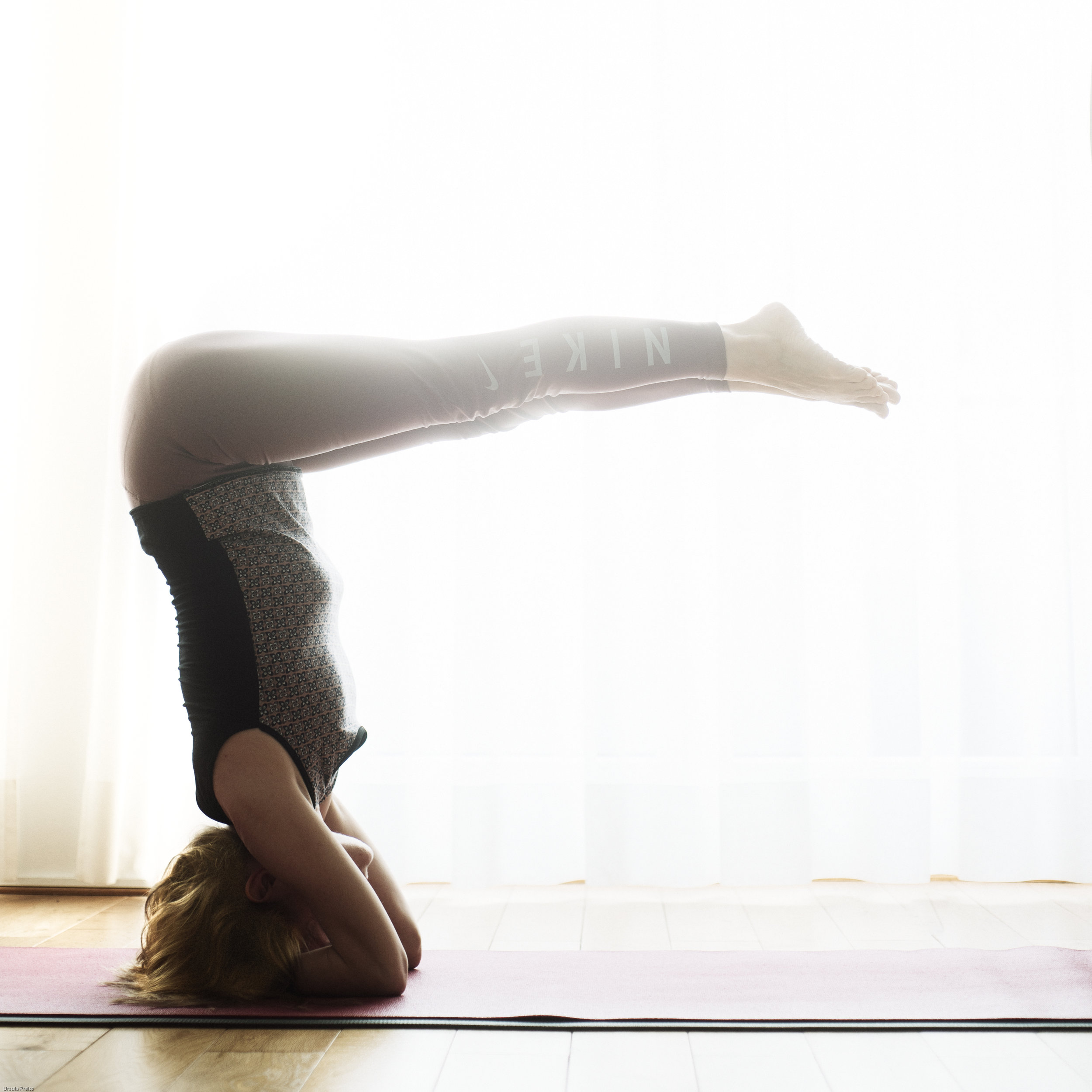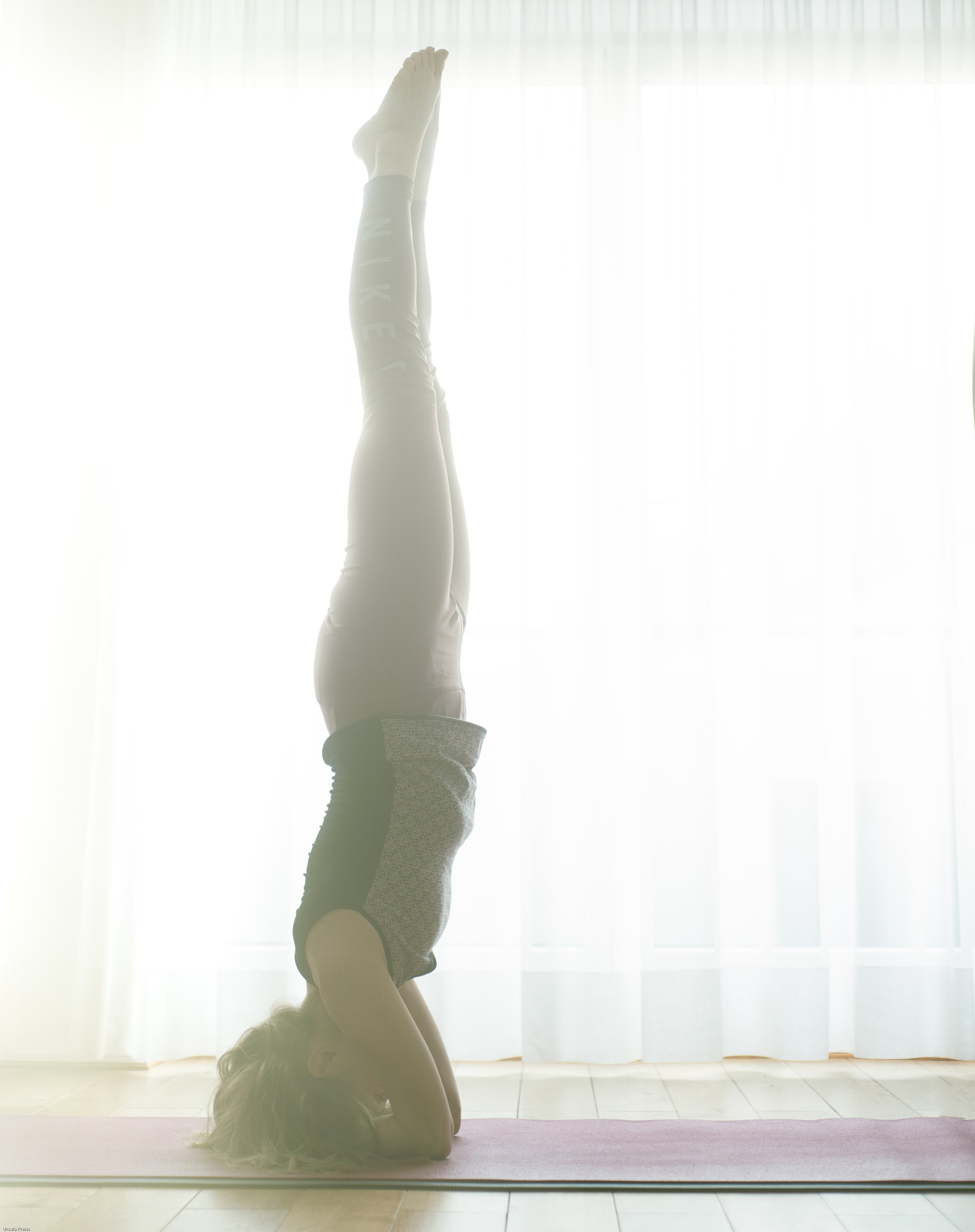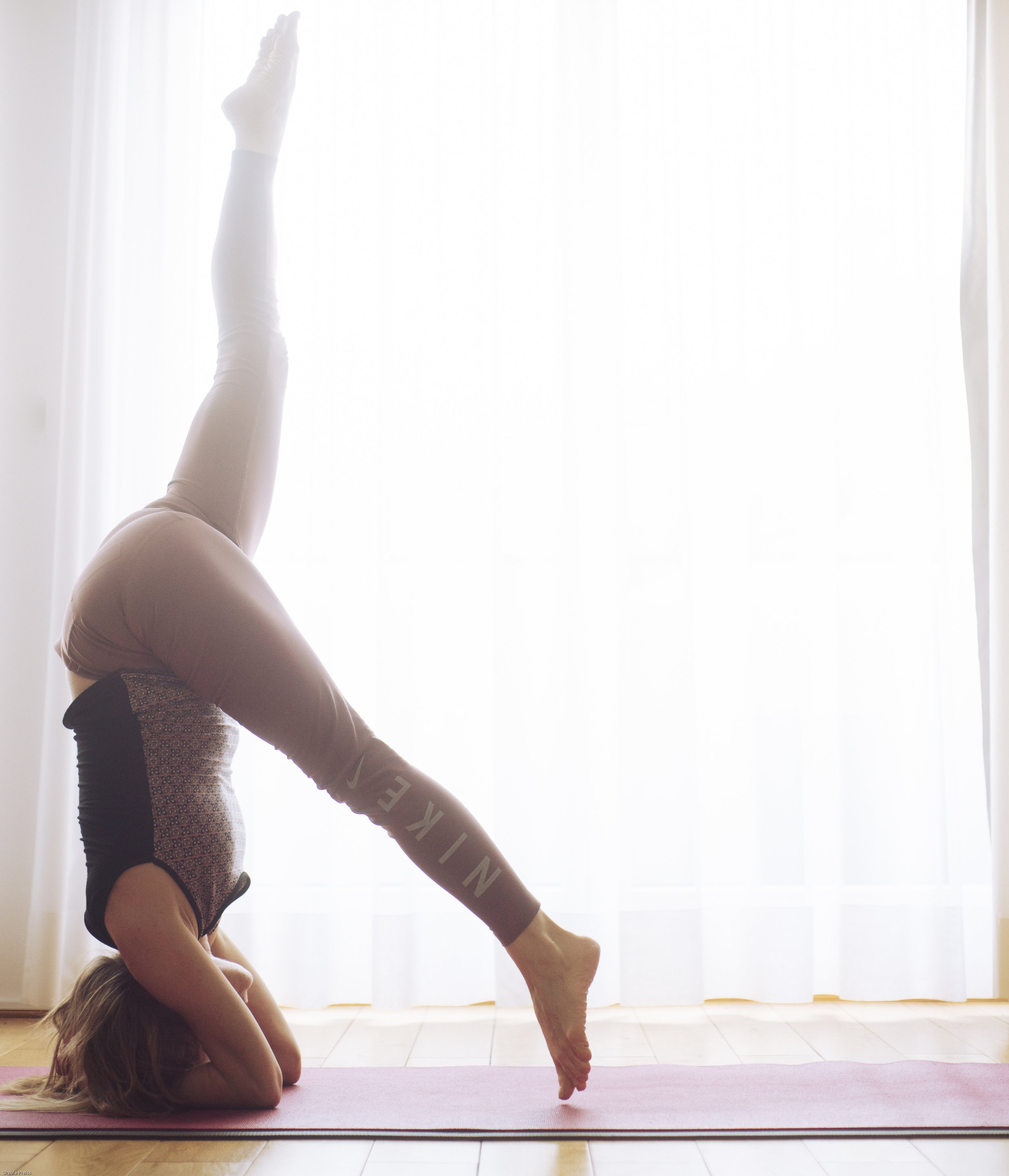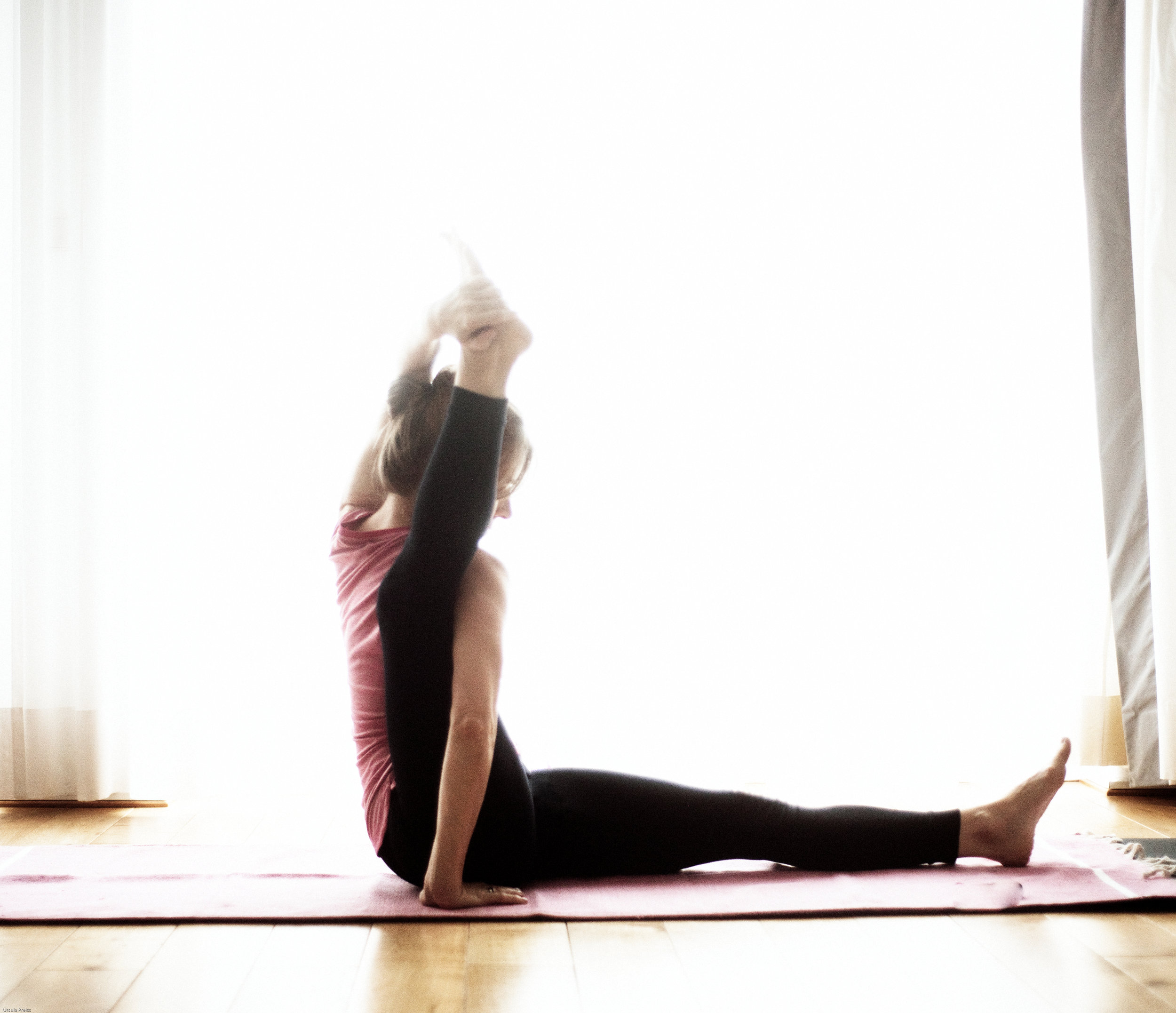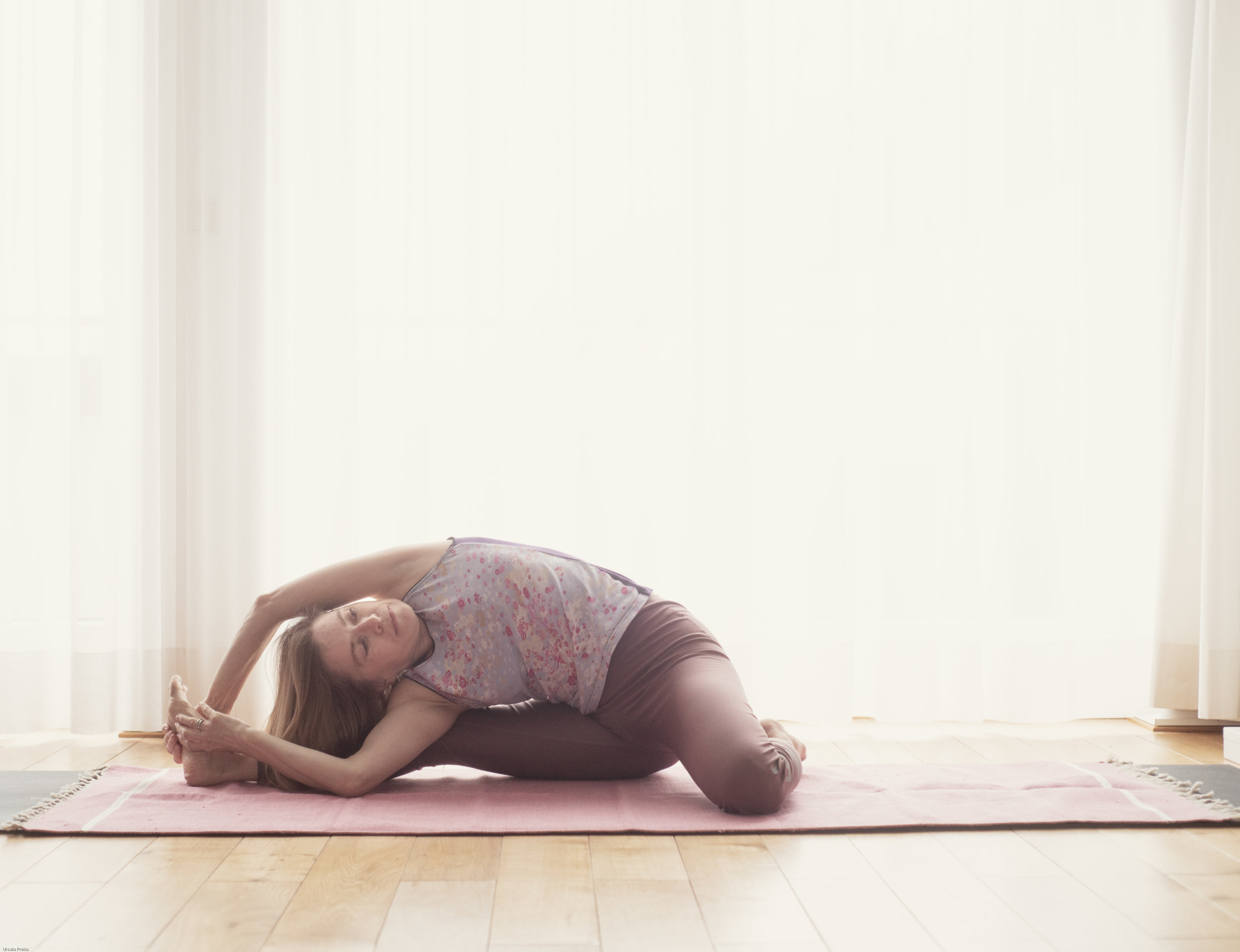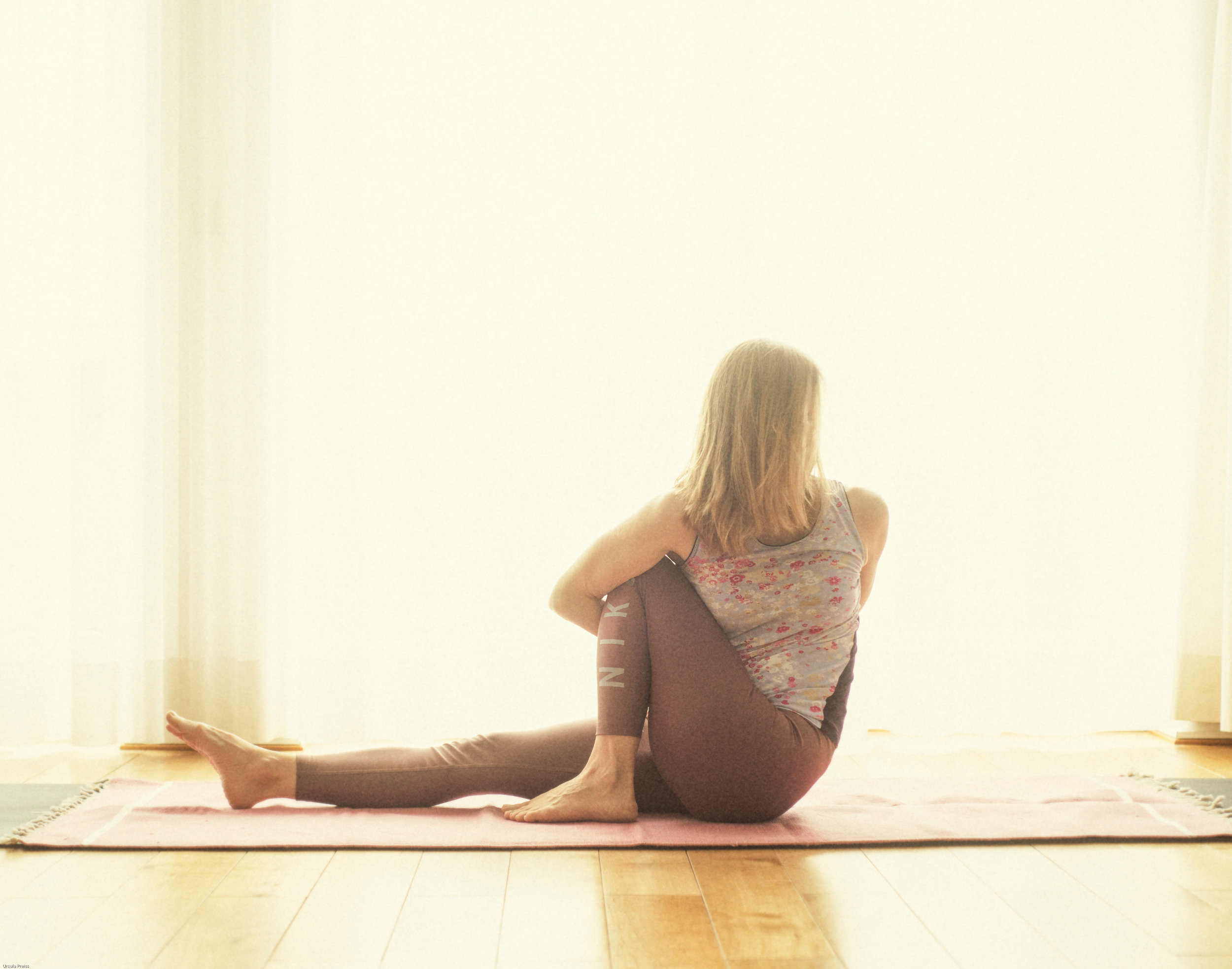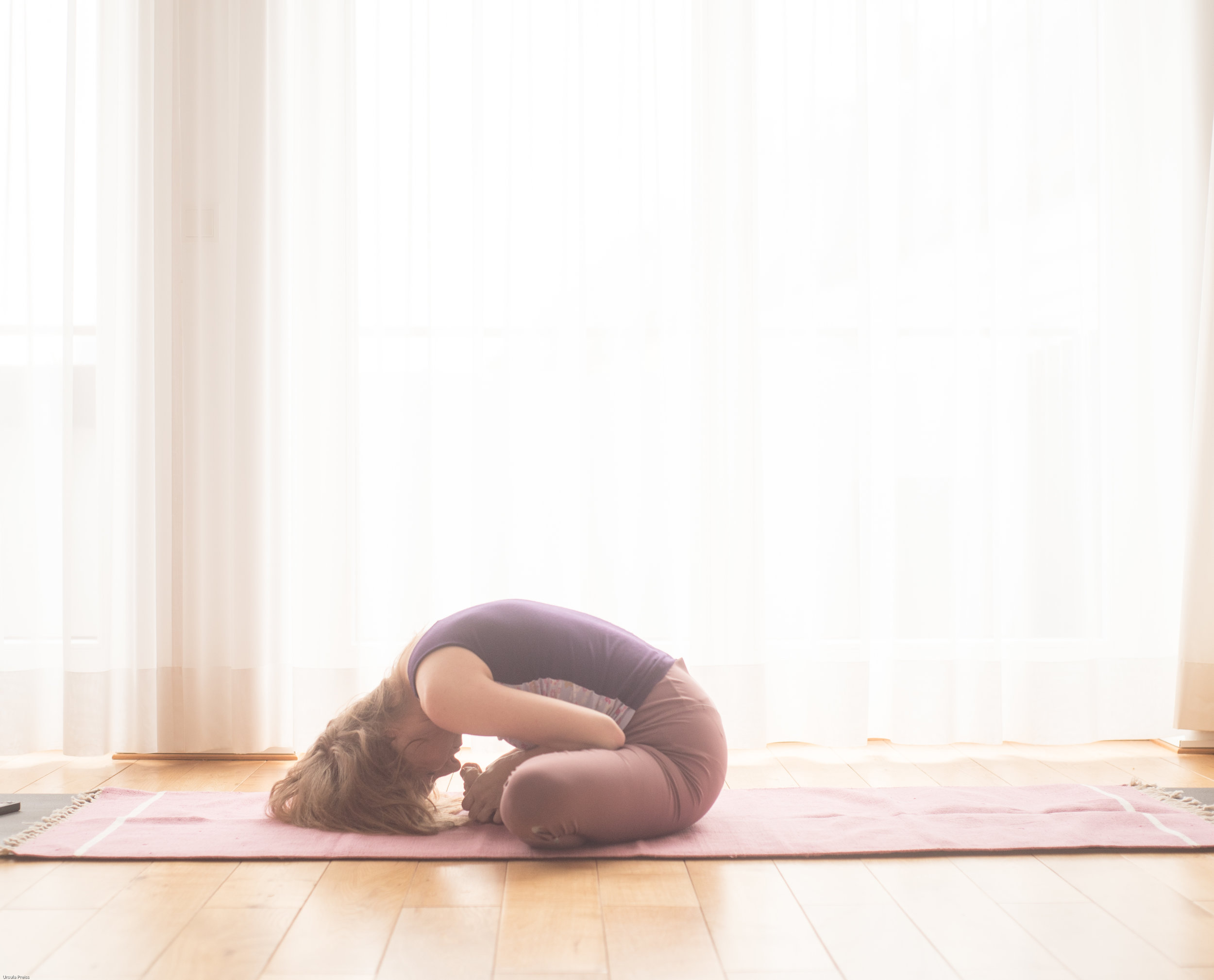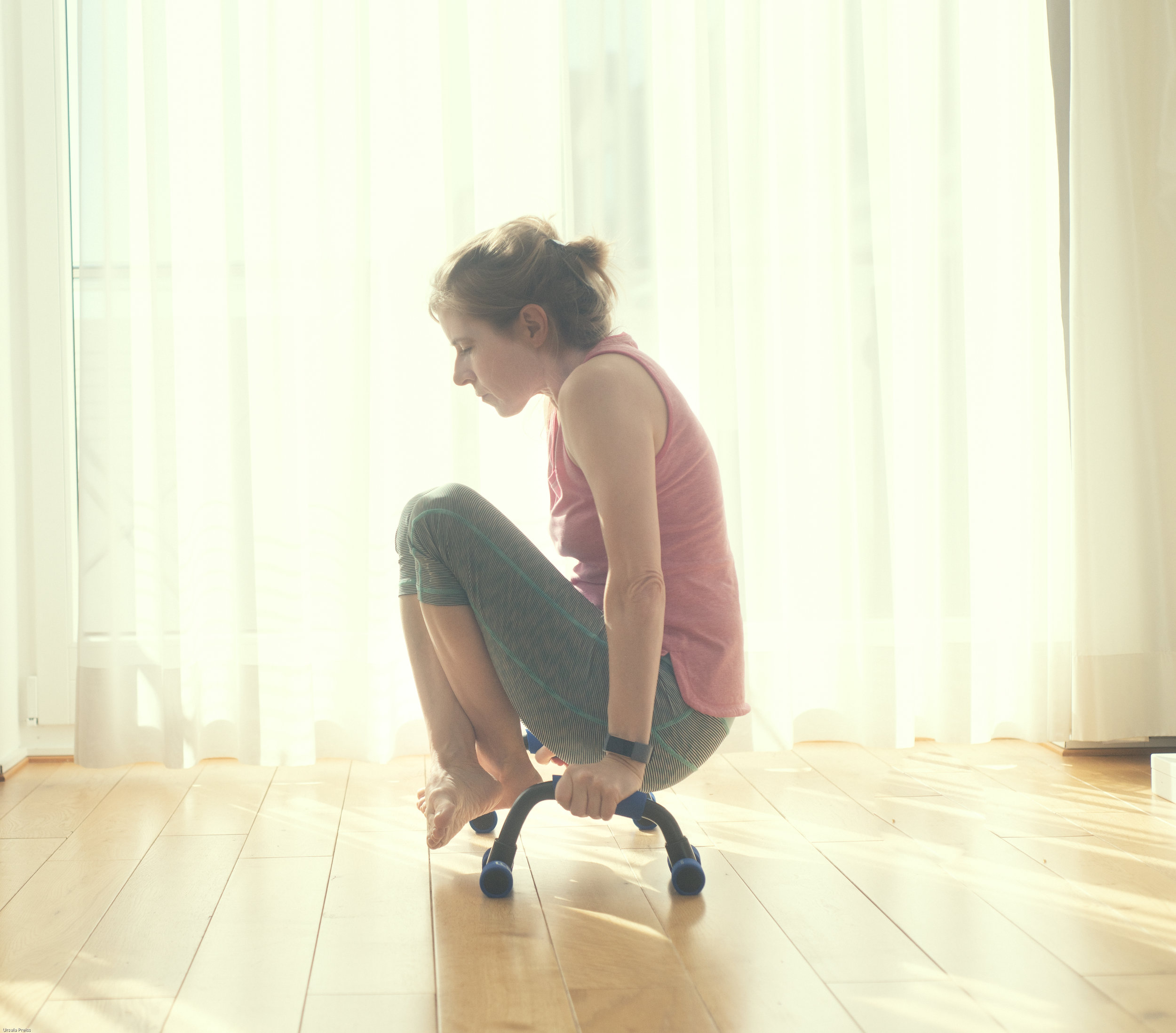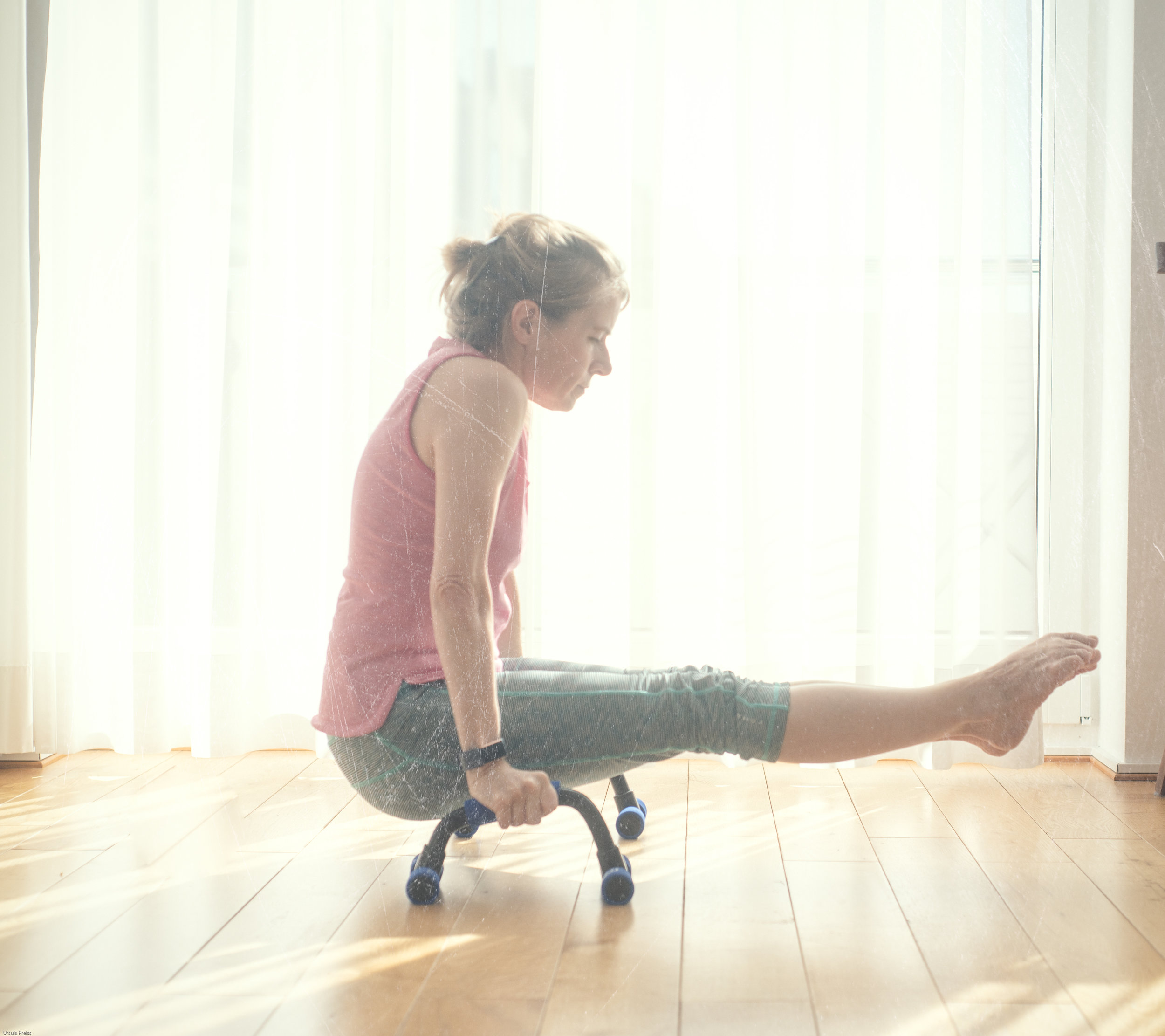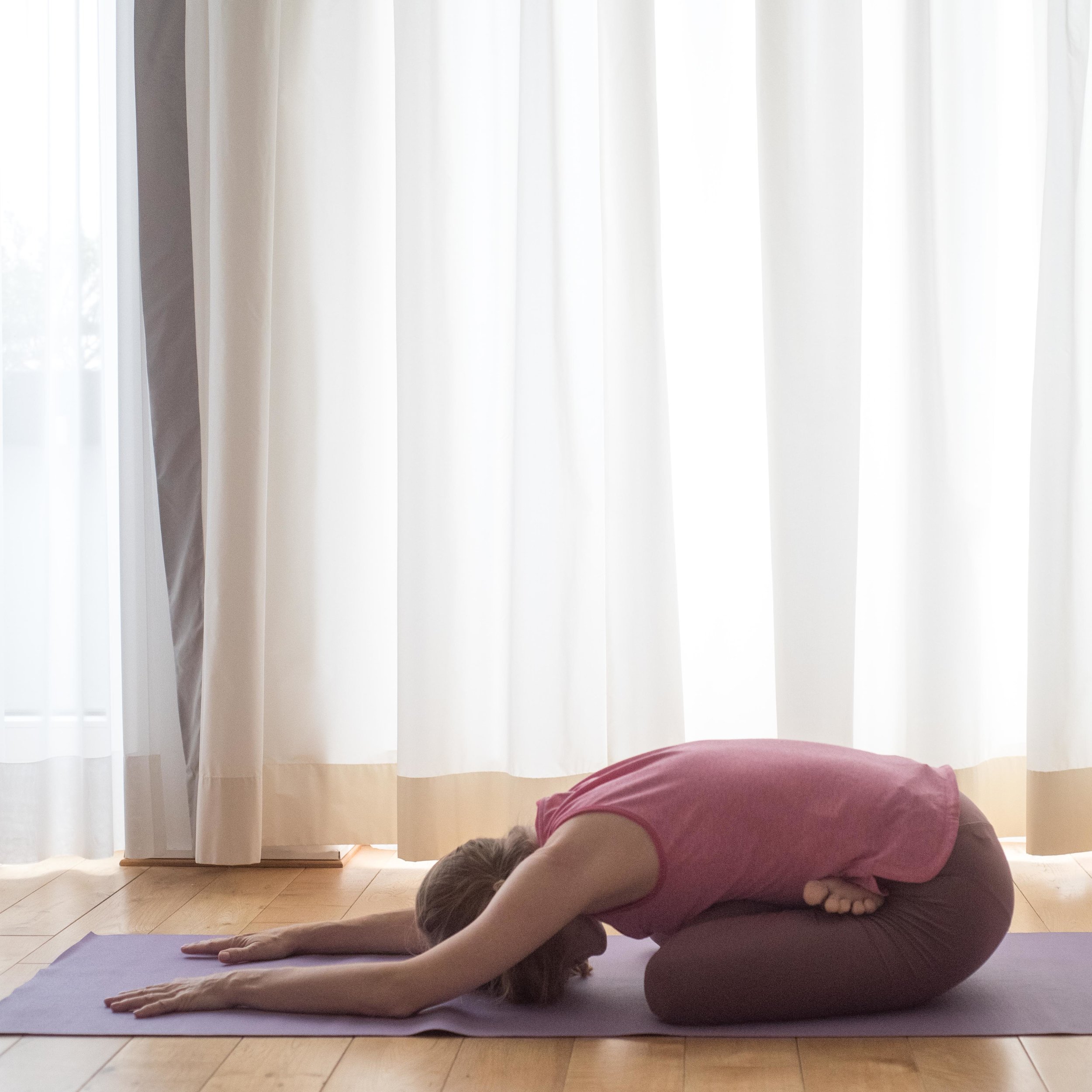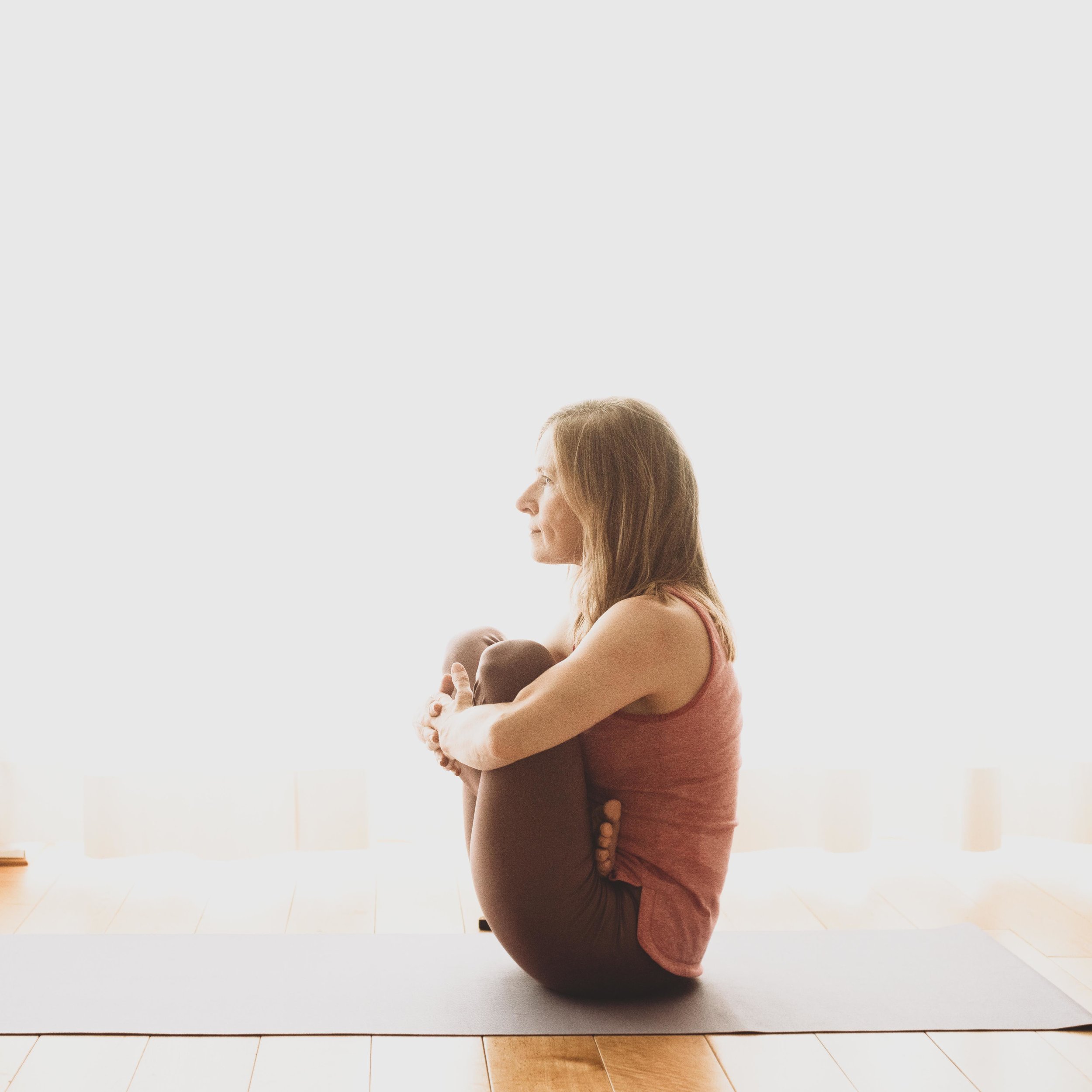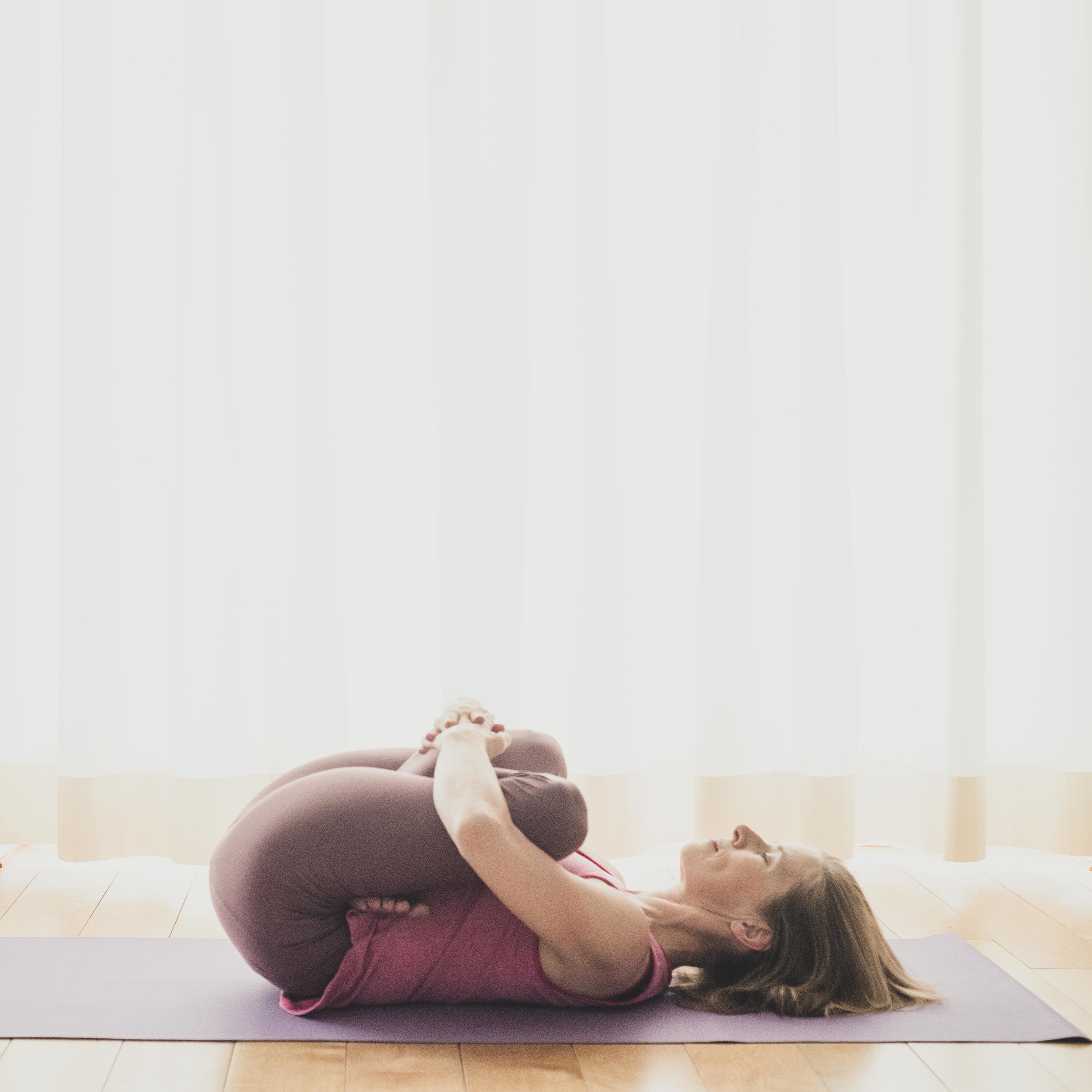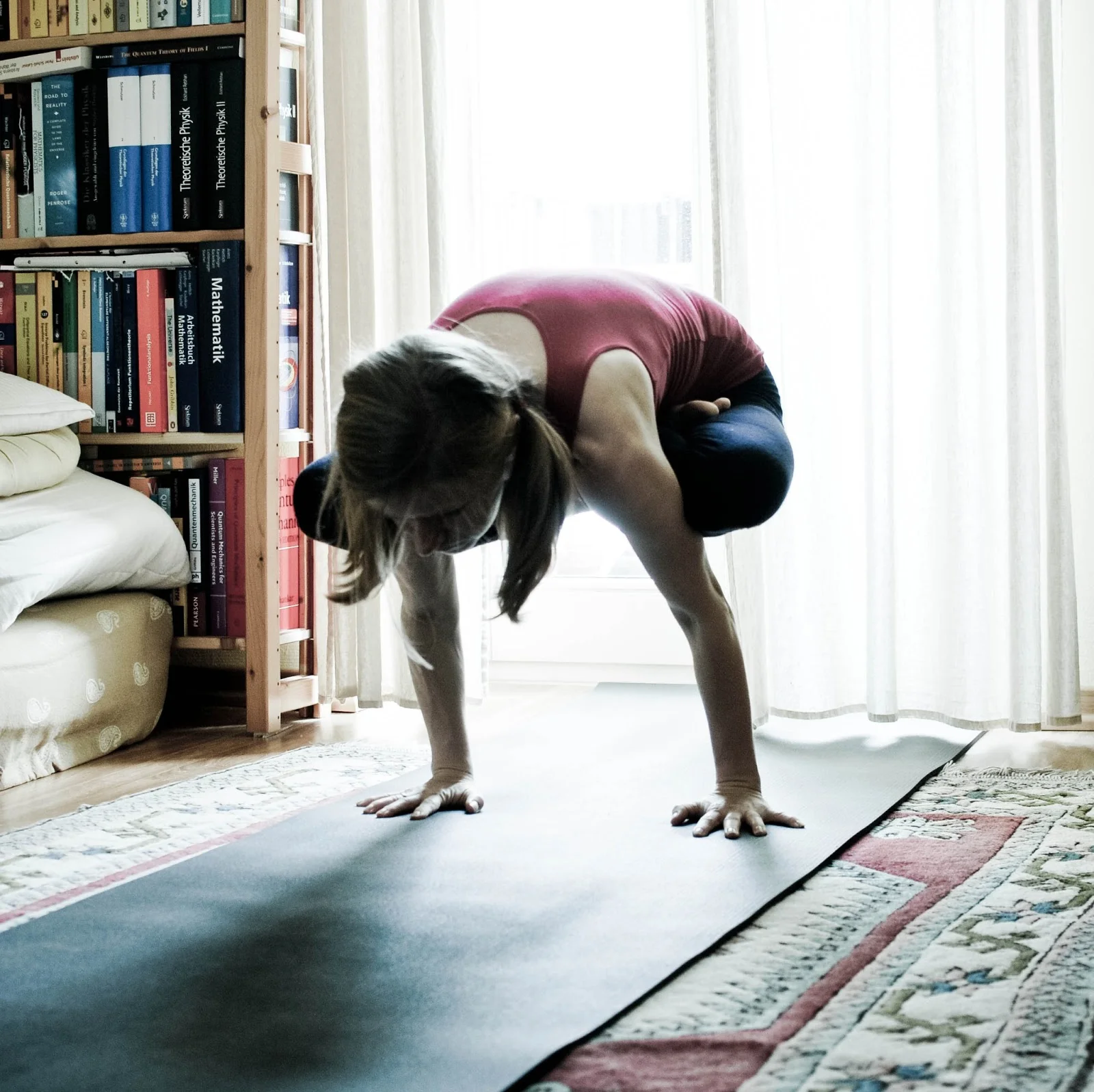Headstand can be learned in one session.
Here are the steps:
Proper preparation is everything. Take care that your elbows are not too far away from each other. My arms are almost parallel. This is very important.
Walk with your feet to your body. It’s not necessary to have straight legs. Finally the back should be parallel to the wall.. (Picture #1)
Bend one leg and bring it close to the body. Only one foot is the floor. The weight should be on the arms and not on that foot. (Picture #2)
Jump a tiny bit to bring both leg in the same position. The closer you walked the feet to the body the less you have to jump. It’s a tiny dynamic movement. (picture #3)
There are three possibilities to balance: The thumbs behind the head can press against the head. Breathe evenly. Engage the bandhas. Especially the last point gives a lot of stability. When no feet is on the floor the pose is mastered. Now only the legs must move upwards. This can be done very slowly. But that’s it.
People with high blood pressure should avoid this asana.
Sirsasana is an inversion and a balancing asana. Mastering this pose gives a lot of self-confidence.
For those who are interested in beauty: Headstand is a good face lift. :)
Headstand has a lot of positive effects on the body:
It strengthens the core muscles
Blood circulation improves
It improves digestion and brain function
I think it makes sense to learn first shoulder stand, then headstand, then forearm stand and then handstand.
Challenges can be to try variations and to hold this asana longer. I learned from people who held the pose for one hour. For me 1 to 5 minutes are enough. In order to experience the above mentioned positive effects this pose must be held longer than 5 breaths. One should aim for 25 breaths minimum.




